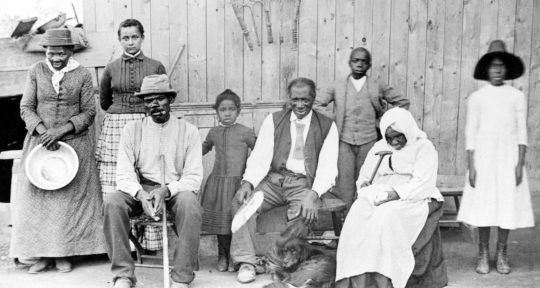It’s July in the late nineties. I’m a preteen cruising downtown Roswell’s Main Street in the back of a rickshaw. It’s kaleidoscopic, covered with streams of neon ribbon and fake flowers. It looks like a cross between a My Little Pony and a maypole. The driver is a man from Utah named Moses. It’s so hot I can’t feel my face. Moses, me, and 20,000 other people are here for the cause célèbre: the annual UFO Festival.
Unlike most of the festivalgoers, Moses is not dressed like a Martian. To be fair, he’s not dressed much at all. He is shirtless and barefoot with the look and intensity of a more affable David Koresh. There are TV antennas and reporters swarming, including an up-and-comer named Anderson Cooper. Moses sneezes and announces he just had a “respiratory orgasm.” Again, it’s the nineties.
Until recently, this was the alpha and the omega of my experience as a Roswell, New Mexico tourist. I am not from there, exactly, but it’s my mother’s hometown and where my grandparents married and later retired. This was after years of living in places with grand scenery. Places like Denver and Alaska and Norway.
When they met in Roswell in the 1950s, it was an oil and gas boomtown with a brightly-lit Main Street that boasted movie theaters and department stores. At its peak, its downtown sidewalks bustled with humanity and commerce but no indication of the one-off identity that would come to characterize the city by the late 1970s.
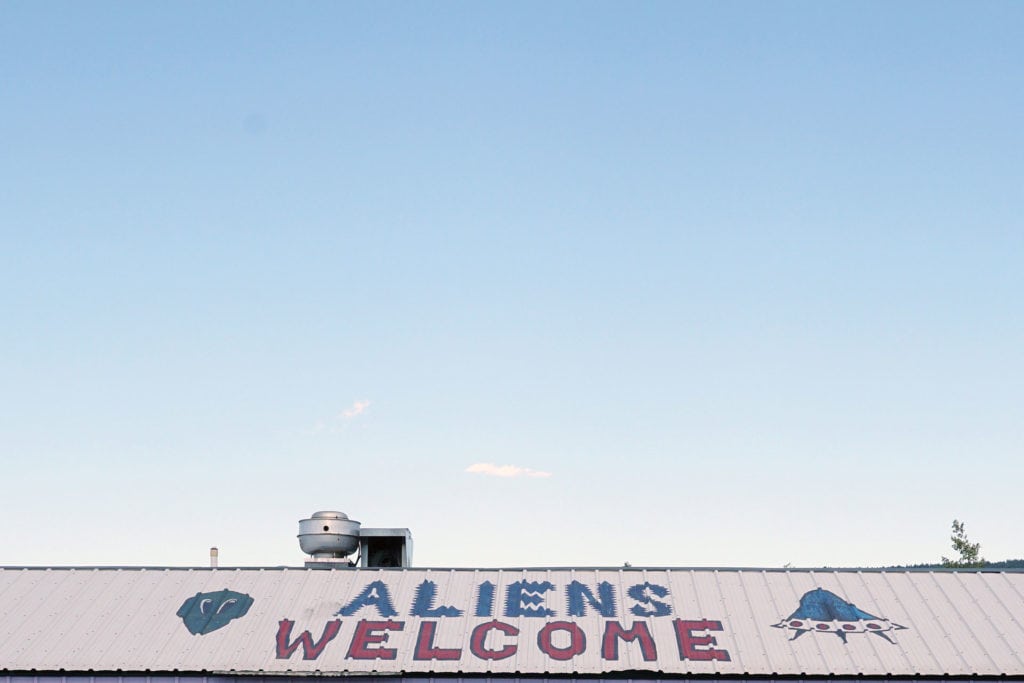
Even for the state that brought us Breaking Bad, Roswell is an outlier. Consider Santa Fe, which has 400-year-old churches, and Albuquerque, which has two Q’s. Roswell is not like either of these places, or so the popular opinion goes. In terms of American cities with a population under 50,000 (its sits a hair below), Roswell’s mayor tells me, it is the sixth most remote in the United States. From town you can drive 200 miles in every direction without hitting a major city.
Growing up, I only went to the International UFO Museum and Research Center—now visited by nearly 200,000 people each year—once. My grandmother, like a lot of the people who live in Roswell year-round, tolerates the UFO thing but does not expend energy or thought on it.
All this is in the back of my mind as I’m making the eight-hour drive to Roswell from Dallas, Texas. “Roswell, New Mexico” has seen a recent upswing in web searches thanks to a new TV series. But is there more to the town than little green men?
True believers
My grandmother wants me to go to the Anderson Museum of Contemporary Art, where she is a member. I can tell she does not think I should go to the UFO Museum. Especially after she tells me so. This stirs my inner rebellious teenager, and I feel a sudden urge to go to the UFO Museum.
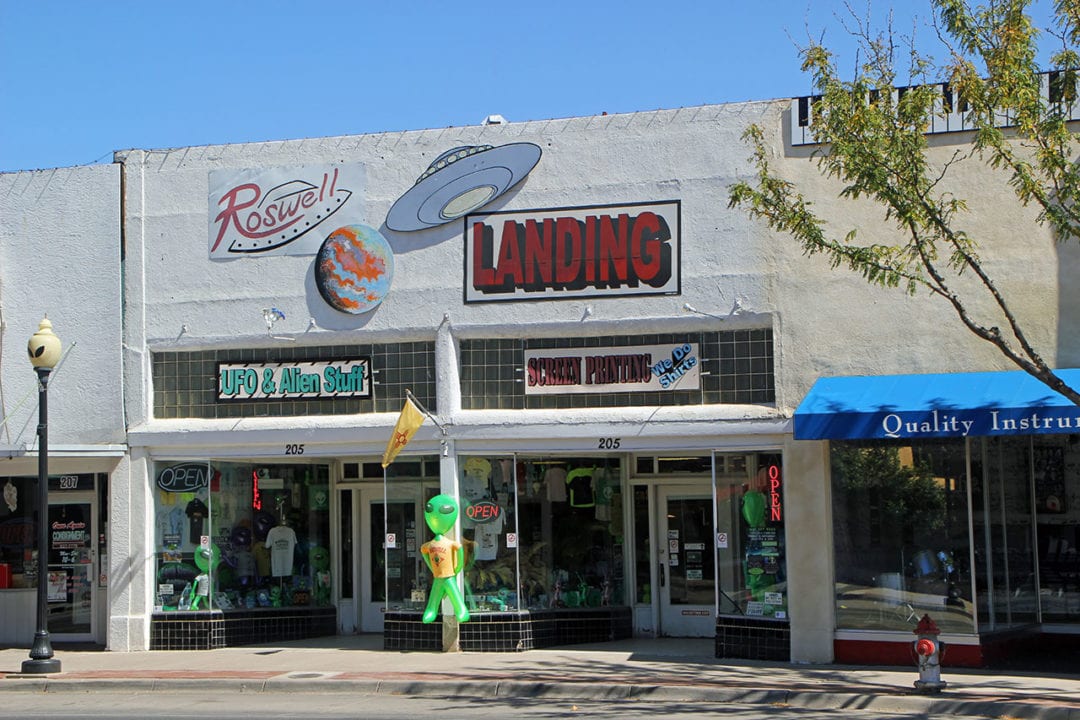
I walk around downtown and swim in the unbridled kitsch of the main drag. Street lamps have alien eyes. Life-sized blow-up aliens hold signs advertising dresses that are 20 percent off. In one window display, in front of a long-shuttered gift shop, four gray rubber aliens, ostensibly drunk, sit around a folding table playing poker.
In the parking lot next to the UFO Museum, I see a vanity license plate that says “BLIVR” and another from Nova Scotia. For a moment I wish I cared about anything in life enough to drive from Nova Scotia to New Mexico.
The museum, which is housed in a 1930s movie theatre, looks exactly as I remember it. It’s crowded for an off-season Tuesday morning. An employee and lifelong Roswell resident named Amanda shows me a world map thumbtacked with hometowns of visitors. There’s a pin stuck in Am Dam, Chad.
I wish I cared about anything in life enough to drive from Nova Scotia to New Mexico.
I meet two retired nurses from Harrison, Arkansas. They spend most of the year traversing the U.S. in their RV. One is named Janet. The other woman declines to tell me her name. But both are eager to tell me about an incident they just had of their own. It happened last night at Bottomless Lakes State Park about 15 miles outside town. They were just there to sky watch.
“As we pulled out of the park facing Roswell, there was this huge, brilliant, bright light,” Janet says, her eyes growing to approximately the size of golf balls. They couldn’t figure out what it was. It just sat there. There was no noise.
Her anonymous travel companion says they watched it for a few minutes. “It was maybe 100 or 150 feet up, cylinder-shaped. Then it turned left and went up the hill and suddenly it was beside us. It followed us up the hill and then, bam.”
“Bam, like it disappeared?” I ask.
“Disappeared. It was oblong-shaped and rounded on the ends.” She pauses. “It’s nothing either of us had seen before.”
This is not the women’s second, or third, trip to Roswell. I ask if they are believers, an unnecessary question in retrospect. Still, Janet is happy to answer: “We know when we look up at the sky, there’s a lot more than what we can see. That’s a fact. And I think it’s very arrogant of the human race to think we’re the only ones.”
Another side of Roswell
Just blocks from the hoopla of the UFO Museum sits the Anderson Museum of Contemporary Art (AMoCA). When I walk into the unassuming, gray metal building, I feel like a preschooler on peyote. For the next two hours, I have the place to myself. A sign advertises “Great art from around the world, except Antarctica.”
My favorite work is a pinball machine. Next to it is a sign that says, “Please visit the front desk for balls to use with the pinball machine.” It doesn’t take an active imagination to theorize why the balls aren’t free-flowing. To the front desk I go.
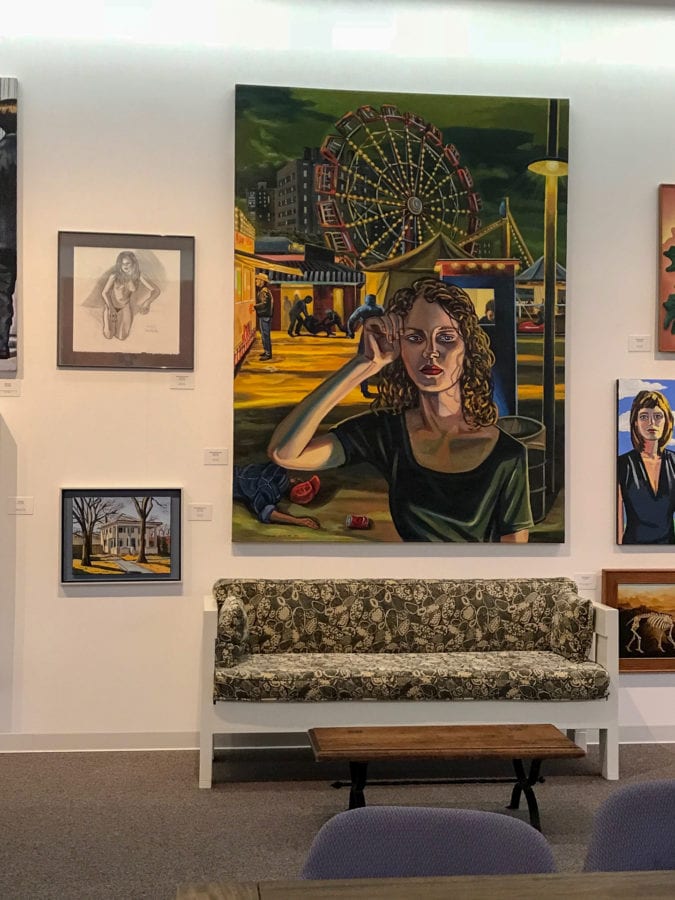
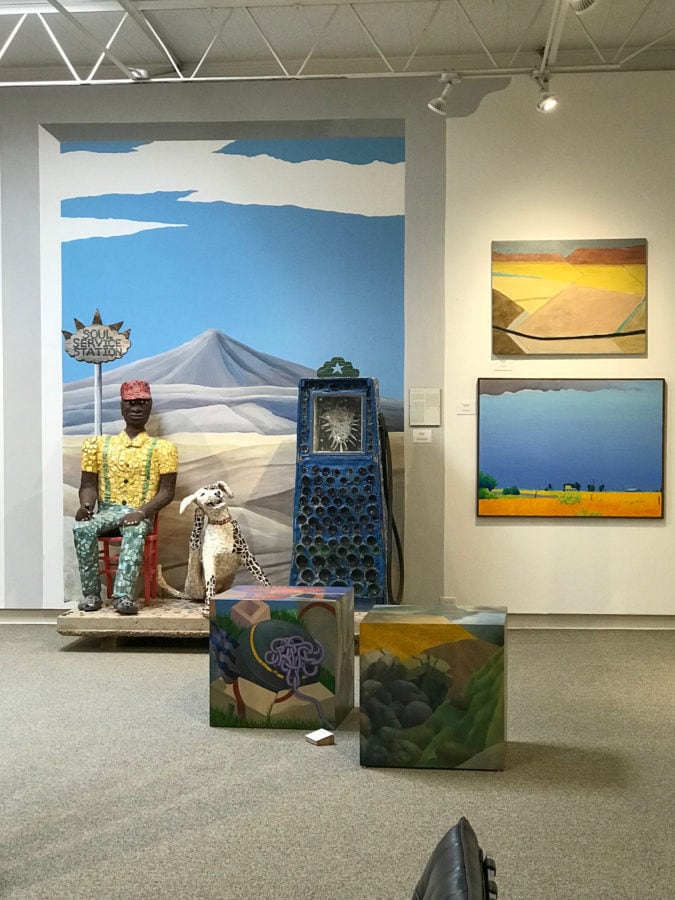
The museum houses a permanent collection of more than 450 paintings and sculptures. And it’s free. The layout is arranged to make it feel like a home—albeit a 17,000-square-foot, sensory-assaulting one—with couches and chairs placed every few intervals. It’s understandable, because the sitting helps to take it all in. There’s no traditional curator, and nobody is running around telling you what to look at. Like the pinball machine, it’s not stiff-upper-lip art.
Established in 1994, the AMoCA is the brainchild of Donald Anderson, a multi-millionaire who made his fortune in oil but is an artist at heart. He didn’t need the art world to validate his belief that this desert town in the middle of nowhere could—would—support a world-class art scene. He simply made it happen.
The UFO Museum opened at about the same time the Anderson Museum did, but for every 100 people who visit the UFO Museum, only one visits the Anderson. That is a shame.
The Roswell incident
Like Roswell, my late grandfather was a walking contradiction: A professionally unserious, brilliant scientist who had a hardhat drinking contraption from which he’d slurp Coors Light through a twisty straw. He also sat on the board of the Roswell Symphony.
The few times I heard him talk about “the Roswell incident,” he got serious. This was not a gray area for him. According to various conspiracy theories, a UFO crashed in Roswell in 1947 and the government covered it up. It’s what kicked off the UFO craze that still defines the town.
When I was about 13 I told my grandfather I had read in a magazine that rinsing my hair with cold water would make it shiny. He said, “That’s scientifically impossible,” and told me all the reasons why. It’s the same hardline scientist certitude that supported his stance on the incident. To him it wasn’t a feeling. It was the truth. He was the smartest person I knew. I didn’t want to argue with the smartest person I knew.
Later I meet with Dennis Balthaser, a 77-year-old retired engineer and the sole proprietor of Roswell UFO Tours, a one-man operation he runs out of his SUV.
Five days a week, twice a day, Balthaser’s two-hour long tours around Roswell highlight 20 places connected with the incident. When we meet at the Starbucks on Main Street, he’s got two toothpicks tucked into his brown Stetson cowboy hat. He has been researching the incident for almost 40 years.
“One of the things that’s bothering me is that they’re starting to tear the buildings down,” he says, referring to the buildings around town associated with the alleged crash. “If there is a government cover-up that’s still going on, why? What does anyone have to lose after all this time?”
He places his confidence in the witnesses he met, who are mostly now dead, asserting that they had no reason to lie.
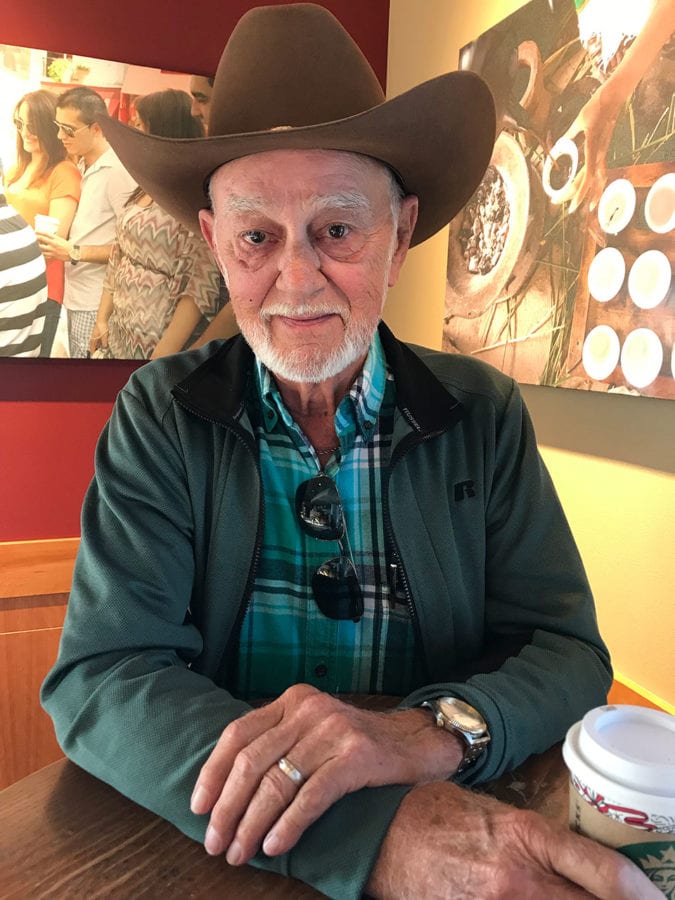
“The aliens here were probably what they call grays,” he says. This is contrary to the mostly neon green guys that pepper the storefronts along Main Street. “They’re 3.5 to 4 feet tall, big heads, large eyes, long arms, skinny. Four fingers, no thumbs.” By now, the three people seated at the table next to us are, as they say, all ears.
“There’ve been other descriptions of reptilians. Scaly, snakelike.” And, alternately, “Nordics. Blonde-headed and blue-eyed. You could be one of them. I could be one of them.”
He speaks matter-of-factly, with no exaggerated tone or mannerisms. He’s not trying to convince me. He’s just telling me what he knows. “Are you learning things?” he asks. I find our conversation comforting. It’s almost like I’m talking to my grandfather. He was 100 percent Swedish.
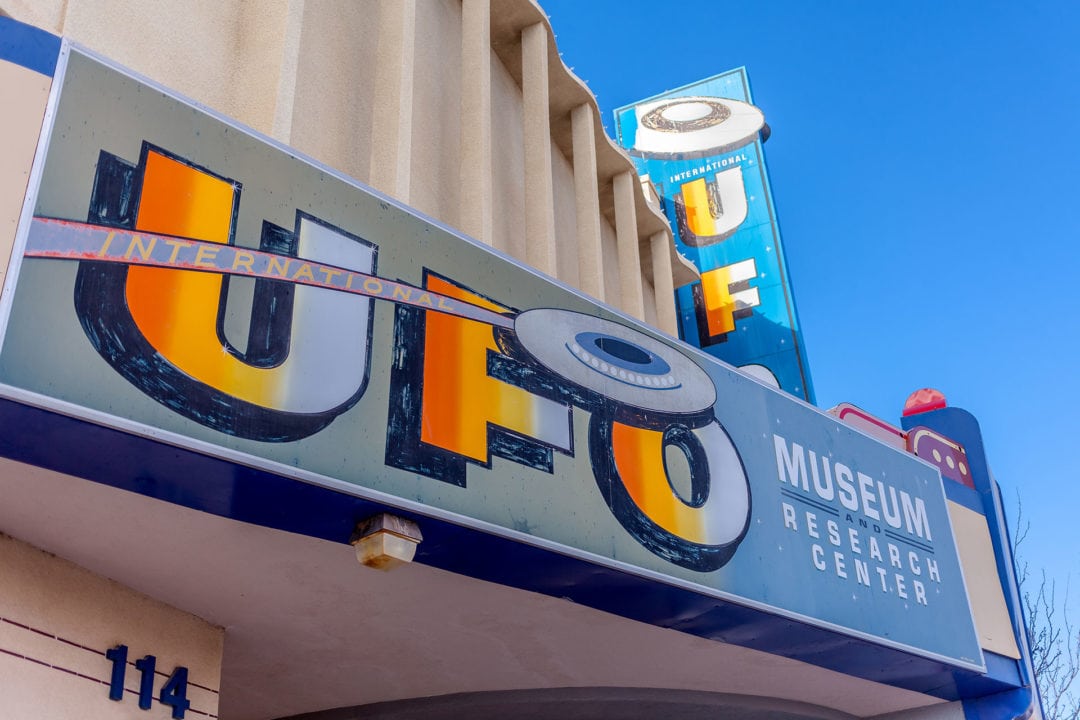
Man in black
Dennis Kintigh is the mayor of Roswell. He was an FBI agent for 24 years and has lived here since 1992.
“There’s a level of sophistication here that will candidly surprise people,” he says. “We have a vibrant art community. People are mesmerized by that. We have a symphony. People are like, ‘Roswell has a symphony?’”
When I ask if he ever gets tired of the UFO thing, he does not miss a beat.
“No. It’s our brand. It’s an incredible gift given to us,” he says. “People might not know where New Mexico is, but they’ve heard of Roswell.”
Kintigh attends the UFO festival every year, wearing a black suit with a white shirt, black tie, and sunglasses.
“People might not know where New Mexico is, but they’ve heard of Roswell.”
We talk about the giant aquifer in town, which he says is the reason Roswell even exists. The town sits smack on top of it, and one need only drill eight feet beneath the ground before hitting water, according to Kintigh. The city owns enough water rights to support roughly the population of Cincinnati.
“This is New Mexico. Whiskey is for drinking, water is for fighting,” Kintigh quips.
I laugh, but it’s not a joke. Water is controversial around these parts. The American Southwest has exploded in population over the last six or seven decades. Water is not easy to come by in the semi-arid environment.
“They fight over it,” he says. “And we’re just sitting here not having that problem. We have other issues, but water is not one of them.”

A yarn ball of juxtapositions
Before I leave town the next morning, I drive out to Bottomless Lakes State Park. Formed in 1933, it is the oldest state park in New Mexico. I have never been before. And unlike the Arkansas women, I am not brave enough to visit at night.
Despite the name, the park’s nine bodies of water are technically neither lakes nor bottomless. They’re actually sinkholes, up to 90 feet deep. Underwater plants give the water its color, which looks like a Cerulean crayon. Local lore says the place got its name at the turn of the twentieth century after cowboys, attempting to test the depths, dropped two tied saddle ropes into the water and never heard the drop.
I lie on top of my SUV and stare up at the moon, which is visible despite the early hour. My Roswell nostalgia has never involved aliens. Now maybe it does.
There are serious, intelligent people who dabble in government conspiracy theories, and a dry desert landscape under-girded by a massive water source. I’ve yet to encounter this brand of tension anywhere else.
Roswell is like a yarn ball of juxtapositions. It’s remote and barren yet houses a vibrant arts community; talented artists live 12 blocks from garish alien and UFO statues. There are serious, intelligent people who dabble in government conspiracy theories, and a dry desert landscape under-girded by a massive water source. I’ve yet to encounter this brand of tension anywhere else.
All these people—the locals, the tourists, the long-term visitors—believe in Roswell and to an extent, themselves. They may or may not believe a UFO crashed in Roswell in 1947 but they all believe in the place. Roswell locals are kind, hardworking people who happen to live in the UFO capital of the world.
On my way out of town, I pull up to a stop light next to two Harley-Davidsons. One is blasting “Hotel California” by The Eagles: “You can check out any time you want, but you can never leave.” Yep. That sounds about right.



